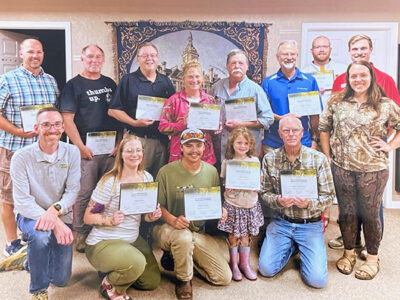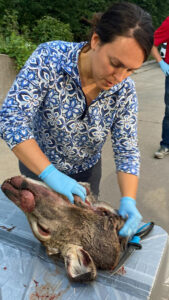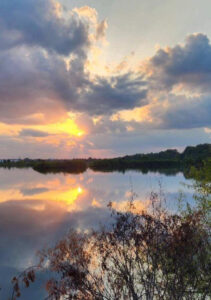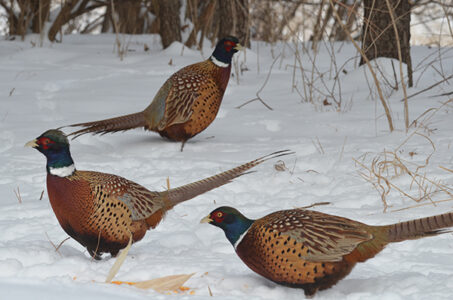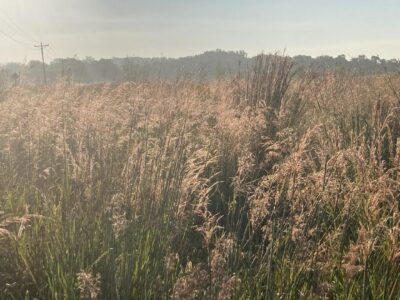Deer seasons begin Oct. 1 — and things to be aware of
Oct. 1 is the traditional start date for the regular deer hunting season for archers. However, youth hunters age 15 or younger do have an earlier time frame that began on Sept. 20.
If they do not fill a tag early, the opportunity to use the tag during later seasons remains valid. As the days of fall continue to unfold, special times for hunters to use muzzle loading weapons will have their time, and of course, gun seasons one and two will be the important times for significant planned reduction in overall statewide deer numbers.
Deer population estimates prior to any of the seasons is roughly estimated to be in the range of 500,000. About 20 percent of those deer will be taken by hunters which equates to about 100,000 or slightly more based upon past historical statistics. Management of the population is a must in an effort to maintain a healthy herd.
Keeping the overall numbers within the carrying capacity of the land is essential. Keeping numbers at a level within tolerance of public perceptions is also a factor. It is not an easy thing to do.
Modern conservation laws and regulations, plus hunter education classes and investments in wildlife habitat land projects are all important factors that hunters eagerly support. Hunters study wildlife behavior.
Good hunters also abide by the laws and ethical standards demanded to keep this activity supported by a vast majority of the non-hunting public. Hunters care deeply about their sport and care deeply about the management roles they play in all wildlife conservation efforts. Regulated harvesting of huntable wildlife within the parameters of sound science helps to ensure the best possible long range outcomes for wildlife survival.
Any wild game animal taken legally may be called a trophy, even if for instance a deer does not have antlers. Many misconceptions exist about big antlers on deer.
Yes, it may be a goal but those odds are not guaranteed by any means. If it happens, great. If not, well, that is the way the ball bounces.
My personal efforts at archery deer hunting started in 1966 with a nice but small antlered 3×3 buck in the Black Hills of South Dakota. After that, it took 39 years before a true record book qualifying deer fell to my arrow.
Between then and today, I have spent hundreds of tree stand hours over many years watching and waiting for opportunities. I have taken many doe deer, and sometimes an entire season may pass without being able to have the correct timing to take any deer. I now enter my 59th year of bowhunting.
Trophies may be defined by all sorts of standards. For instance gardeners are proud or well cared for tomatoes, or pumpkins, or unique flowers and lots of other vegetables. Fishermen and ladies may fish all day for a big trout, a big bass, or if deep sea fishing, a tuna or marlin just to name a few.
This list goes on and on. Photos are made and bragging rights are earned and shared. Food is acquired from Mother Nature and her storehouse.
Others buy packaged foods at grocery stores, and may have no idea of how that food was grown, cared for and ultimately taken for slaughter.
The process is not something that can be sanitized. We as a society depend on food sources of all kinds. Wild foods are just as nutritious as farm fed livestock, maybe more so, but our society needs a volume of meat choices often supplemented by meat from wild critters.
———–
Today’s images have an additional concern and focus. It has to do with another reality of life and living. Sometimes wildlife species become ill.
Most of the time they do not, but when a disease strikes and it is obvious that something is wrong with their health, it is tough or downright hard to determine why. It is a research dependent investigation to answer questions of what it is, how it became an issue, and what if anything mankind can do about it.
You and I can go to a doctor and tell him/her about our ailments. We talk and they ask questions. The doctor can take blood samples for testing.
Based on medical knowledge and symptoms, a treatment plan can become the plan to follow. With wildlife diseases, things are a lot different.
The species cannot talk to us. Only their body condition and outward behavior may hint at an ailment. Capturing a wild animal to take blood or tissue samples is not easily accomplished if at all.
The list of wildlife health issues is as long for them as is the list for people. Wildlife species sometimes die and if and when found, necropsy investigations may hint at or offer answers.
A huge concern for deer species around the world, and for deer family members in North America, is the disease called (for short) CWD.
It is titled Chronic Wasting Disease, a misfolded prion protein that builds up over time in the central nervous system and leads to neurological degradation. It is a Transmissible Spongiform Encephalopathy (TSE) similar to Mad Cow Disease and Scrappie. It is spread when prions move amongst animals through bodily fluid exchange or by persistent elements in the environment where infected animals live. It was first discovered in Iowa in 2013.
Here is the bad part. It is 100 percent fatal. However, deer can and do die of other causes before this disease begins to show outward signs.
CWD may take up to three years to become symptomatic, but deer may look healthy anytime prior to any external body condition degradation. A deer with CWD will not know it and can be shedding in its saliva those misfolded prions as soon as three months after infection. Clinical signs may appear anytime between age 1.5 and six years after exposure. The average time is closer to 18 to 36 months.
CWD positive sampled deer in Marshall County have turned up in a few cases over the last two years. The disease is more prevalent in Northeast Iowa, parts of eastern and south central Iowa.
Iowa DNR managers have done extensive sampling statewide and concentrated sampling as needed in known infected areas. There seems to be a slow spread of CWD to new locations every year. In part, this is due to how a carcass is handled after it is killed, or even natural dispersal of deer to find new territories.
How can landowners and deer hunters help understand this disease? Know where you are hunting and whether CWD has been found in that vicinity.
Work with landowners to manage deer densities downward through legal hunting. Submit samples from deer and then make informed decisions on eating the venison.
Dispose of carcasses in a landfill or at the site it was harvested. Do not concentrate deer around feed sources or mineral blocks.
Do continue to hunt safely and share CWD knowledge. Do report sick looking deer to wildlife biologists or conservation officers.
Do understand that a healthy looking deer may be a carrier and it could be shedding prions into the environment. The Centers for Disease Control and Prevention recommend not eating meat from positive CWD tested animals, and do not move carcasses across state lines or even long distances within the state.
The class members who attended a recent CWD series of informational meetings are front row, L-R Tyler Harms, DNR biologist; Faith, Hunter and Hazel Filloon and Garry Brandenburg. Back row L-R are Adam Bustkern, Jerry Overstake, Craig Fish, Melissa Ream, Mike Meetz, Danny Nelson, Scott Kemmerer, Adam Janke and Rachel Ruden. They are willing to share what they learned with landowners, hunters and the general public.
———–
And to end today’s theme of things that can negatively affect deer, here is another different disease. It is called (for short) EHD, which stands for Epizootic Hemorrhagic Disease.
It is caused by the infectious bite from a very small fly, a midge. It does not affect humans. We may call the midges things like no-see-ums, or gnats.
There are many midge species, at least 1,400 types, and each may like to bite different birds or mammals. The midge that bites deer tends to do best in dry and hot late summer conditions. This disease is very quick to make a deer sick. An average time from bite until death of the deer may be three days from the onset of symptoms. A deer is typically found dead near or in water. A hard freeze ends the yearly cycle for the midge so new cases after a freeze are not likely. Again, if dead deer are discovered near or in water, and if their body is in otherwise good condition, EHD may be the cause of its demise.
Do call a DNR biologist and/or conservation officer to report these instances.
———–
“The positive thinker sees the invisible, feels the intangible, and achieves the impossible.”
— Winston Churchill
———–
Garry Brandenburg is the retired director of the Marshall County Conservation Board. He is a graduate of Iowa State University with a BS degree in Fish & Wildlife Biology.
- PHOTOS BY GARRY BRANDENBURG Iowa’s archery deer season begins Oct. 1, a tradition of many decades and an excellent history. Hunters with bow and arrow will be watching and waiting for a good big doe, or if lucky, a nice buck. One of the things to be aware of are these realities concerning some deer. They may become sick for a variety of reasons, even if they do not show outward clinical signs of ailments. Chronic Wasting Disease (CWD) is one. Another is EHD, which stands for Epizootic Hemorrhaging Disease. The class photo is from a recent educational series sponsored by Iowa State University and the Iowa Department of Natural Resources. Members of the class took part in learning biological details and things that can be done to try to hold down potential spread of CWD. State wildlife veterinarian Rachel Ruden illustrates how to access lymph glands and remove them for testing for CWD. A statewide effort to increase testing numbers will be a big concern this fall.
- PHOTOS BY GARRY BRANDENBURG Iowa’s archery deer season begins Oct. 1, a tradition of many decades and an excellent history. Hunters with bow and arrow will be watching and waiting for a good big doe, or if lucky, a nice buck. One of the things to be aware of are these realities concerning some deer. They may become sick for a variety of reasons, even if they do not show outward clinical signs of ailments. Chronic Wasting Disease (CWD) is one. Another is EHD, which stands for Epizootic Hemorrhaging Disease. The class photo is from a recent educational series sponsored by Iowa State University and the Iowa Department of Natural Resources. Members of the class took part in learning biological details and things that can be done to try to hold down potential spread of CWD. State wildlife veterinarian Rachel Ruden illustrates how to access lymph glands and remove them for testing for CWD. A statewide effort to increase testing numbers will be a big concern this fall.


